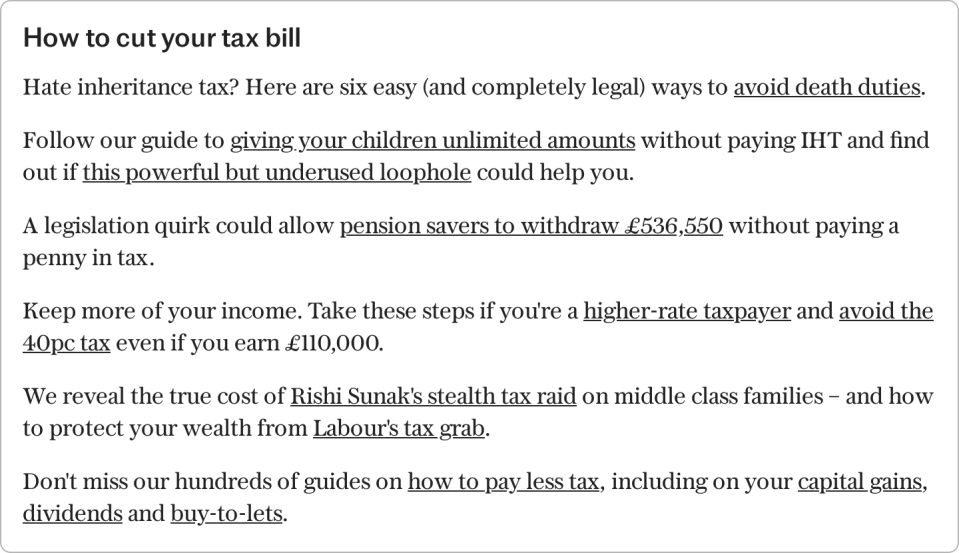House buyers face stamp duty hike this weekend as ‘granny annexe tax’ kicks in

House buyers could see their stamp duty bills double from this weekend as Jeremy Hunt’s tax on granny annexes comes into effect.
The Chancellor said in March that he would abolish Multiple Dwellings Relief (MDR) – a scheme allowing those buying between two and five properties to pay less stamp duty.
Homes with an annexe have always counted as two dwellings. But from June 1, 2024, those buying houses with adjoined buildings will have to pay stamp duty twice and won’t be eligible for any subsequent tax relief.
Stamp duty on residential properties can be as high as 12pc for the most valuable homes.
Jeremy Hunt announced the abolition of multiple dwellings relief in the Budget, citing widespread abuse and a lack of “strong evidence” that the tax break supported investment in the private rental sector.
Property investors said the tax change will drive up the cost of homes with annexes, and added it will help stop commercial landlords buying up apartments in bulk.
But industry bodies including the British Property Federation and investment firm CBRE have previously warned its removal could result in between 13,000 and 25,000 homes not being built.
Back in 2018, Mr Hunt used a similar tax scheme to MDR to buy his seven Southampton flats, saving £100,000.
The similar scheme lets investors avoid a 3pc stamp duty surcharge if they buy six properties or more in one go. This scheme remains in place, unlike MDR.
Scrapping the relief will raise £385m per year for the Treasury by 2028-29, according to official estimates.
Michaela Seager, of tax adviser RSM, said the tax change will mean a “massive difference” in cost for some buyers.
“We had one case this week, where they’re trying to get a purchase over the line and about £30,000 of tax is at stake.
“We’re seeing a lot of people rush transactions through before Friday. May isn’t usually that busy for transactions. But I wouldn’t be surprised if it was because of this deadline.
“There may be a slowdown in sales of houses with annexes, and this may mean less houses going on the market if people keep parents in their properties rather than purchasing homes with granny annexes to keep them close by.”
MDR is calculated by taking the average cost of all the dwellings put together. So, for a property with a granny annex, the total is divided by two, then the stamp duty on each part is calculated and multiplied back up. This means the buyer is using the lower rate stamp duty band twice.
A property with an annexe that costs £2m will pay an extra £68,750 in stamp duty once MDR is scrapped, according to tax advisers Blick Rothenberg.
James Watts, of buying agency Prime Purchase, said he had completed on two properties this week for clients – having deliberately timed the purchases to benefit from MDR before it was scrapped.
“One is four dwellings and the other is two, so that’s a considerable stamp duty saving of tens of thousands of pounds.
“Many of our clients have benefited from it, but it has been under consultation for a while so it doesn’t come as a big surprise.
“It has always been regarded as a nice little bonus rather than the reason why someone would buy more than one property.”
One of his reasons for scrapping the tax relief scheme, Mr Hunt said, came down to the fact it was being “regularly abused”.
Introduced in 2011, MDR has since prompted some companies to file dubious claims for relief on behalf of homeowners – only to disappear before the taxman realises their mistake.
Paula Higgins, of Homeowners Alliance, said these “ambulance chaser tax firms” tend to act quickly, leaving homeowners out of pocket.
“These firms say they can get you a tax rebate, ‘no win, no fee’. But if you do go through with it, pay their fee and get an initial ‘win’ from HMRC – the taxman may later change its mind, say one or two years later, once they’ve reviewed it again.
“Then you’re left with a big stamp duty bill, having paid a fee for nothing. We always say, with tax there’s no such thing as a free lunch.”
MDR was also used by developers to purchase semi-commercial blocks, where homes are in the same building as a shop.
Kundan Bhaduri, of property developer The Kushman Group, said these types of transactions will now slow down – increasing the cost of converted apartments, since the developer will have to pay more for them.
He added: “Acquisition costs of granny-annexed homes will also increase as a result of these changes.”
But for first-time buyers, the tax change could help increase the number of homes for sale on the market. This, Mr Bhaduri said, is because the most common use of the MDR relief is when portfolio landlords buy blocks of flats.
“In the Midlands and across the North East, it is not uncommon for portfolio landlords and investors to buy a block of say, eight £60,000 flats.
“That’s still under half a million, which would barely buy you an apartment in outer London. So effectively, MDR helped investors looking to buy blocks.”


 Yahoo Finance
Yahoo Finance 